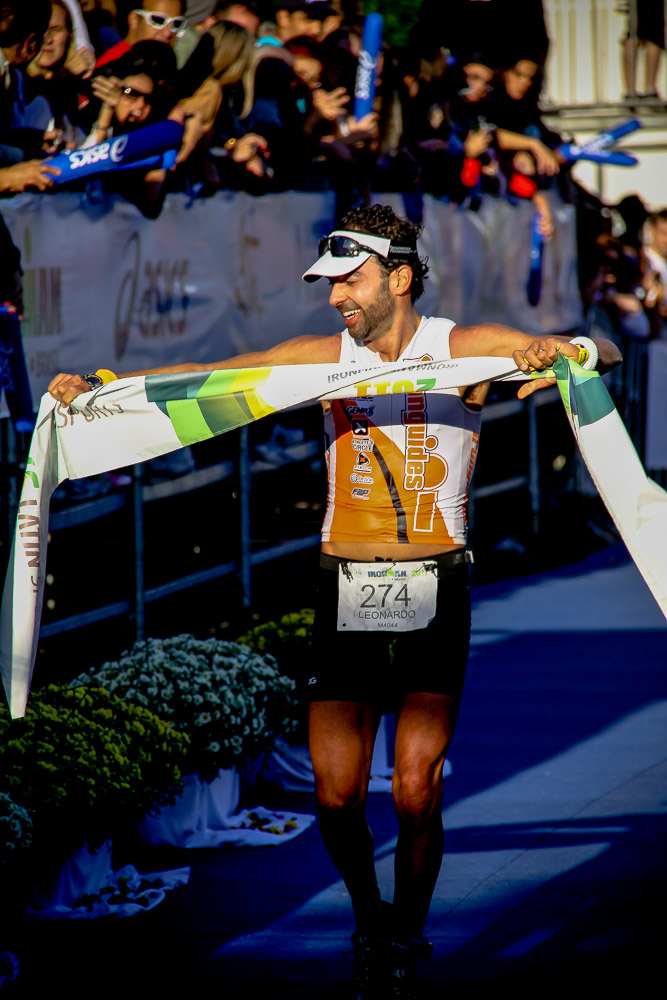Training for top level performance in Ironman, injuries are inevitable but there is a lot we can do to prevent injuries from occurring. So many of us focus on simply swim bike run and neglect the little things that can make sure we do not break down.
When we focus on simply endurance training little problems can be developing below the surface like a time-bomb waiting to explode. This is normally in the guise of tight muscles or stiff joints.
The problem we face as athletes is the body is extremely adaptive and will compensate for any tightness by using different muscles to perform required movements – the result is we do not notice the problem as it is occurring and then it builds to a point and we get a sudden breakdown.
So how do we prevent this from happening?
Firstly I would advise at the start of any new season having a full movement screen by an experienced coach or physiotherapist – they should be checking all basic movements are correct and the correct muscles are working and no underlying tightness is present. From a screen like this you should be able to go away with a set of exercises to address any problems or if all is ok you have a bench mark to work from in case anything does come up during the season.
This option will not be available for everyone and can be quite costly, so how do we check ourselves?
While it is not possible to do a full check we can certainly go through some basic movements to see if we do have problems. As triathletes there are some areas that are typically tight and dysfunctional – these are hips/ lower back and glutes.
HIPS
Stand up with feet shoulder width apart – keeping legs straight put both hands above head and then try to lean back as far as possible. What should happen is in order to lean back, hips will push forward to allow the movement to occur. If you are tight in the hips you will tend to have very little movement doing this and you may even feel strain in you lower back. In bad cases of tight hips you may notice when standing you have excessive curvature of the lower spine and your bum sticks out!!
LOWER BACK
Standing with feet together and hands by your side try to lean over so your hand traces a line down to your knee – this should be smooth and pain free. If you have tightness in your lower back this will feel very uncomfortable and you will find you want to twist in order to allow the moment to happen.
GLUTES
Sit on a chair with back straight and looking straight forward. Now place the ankle of one leg over the other knee and press down slightly on the knee of the raised foot. Now gently lean forward and keep your back straight. If the glutes are tight you will probable feel a deep cramping/ aching sensation as soon as you move, if they are in good condition you should be able to lean forwards with a straight back fairly easily.
Treatment
If you find any issues from these basic movements above then it would be wise to address these before staring any training program, starting a program with an underlying issue is asking for trouble. Spending a couple of weeks working on mobility and maybe seeing a specialist to advise on exercises will make training when you get started much more productive but will also allow you to be more consistent with your training and this really is the key to success.
Day to Day care
We all have our daily routines, what we do first thing on waking up and how we go about our days, simply adding one thing to this routine for all endurance athletes would significantly reduce injury occurrence and in my opinion enhance your ability to train consistently.
What I advise is having a foam roller or trigger point roller close at hand and getting on for a quick check through your muscles for any areas of tightness. This process would take no more than 5 minutes and you will be surprised what you will pick up. The number of times I have had athletes tell me everything is good only to have them jump through the roof after one roll through a muscle group is testament to the fact we really do not feel tightness building up until its at quite an advanced stage.
When rolling look to start at the feet and work up through the body, aim to roll 10 times over each major muscle group, so feet, calves, hamstrings, quadriceps, ITB bands, glutes, lower and upper back.
This rolling has been called the paupers massage but in my opinion is even better than massage as nobody can feel what is going on inside your body quite like you can. If you find an area that is particularly sore then spend more time with small rolls over the muscle until you feel it ease off. If you are not able to relax the muscle you can then consider visiting a sports therapist for deeper more targeted massage.
By performing this simple task day to day you will not only be keeping your muscles in great shape you will be alerted to any problems way before you will feel any tightness or problems in your training.
When we are looking towards achieving the best we can in terms of physical performance we need to be achieving long periods of consistent training in order to reach our true potential. If you were to look at the day to day life of our sports top athletes compared with top age groupers the main difference is not the hours of training as you would be surprised with how little some our best performers train but its the little things around the program that enable them to knock out week after week of hard training. For example hitting the gym for 10minutes after a swim session to work through a hip strength routine or some rotator cuff exercises, spending 10minutes on the roller before a hard run session… all small things but they make a huge difference to development.
Take a step forward with your training and add this 5 minute check to your daily routine and you will reap the rewards come summer.
Enjoy your training.
By Alun “Woody” Woodward
ironguides is the leading Lifestyle Facilitation company for athletes of all abilities. We provide coaching and training services, plans and programs, as well training education, health and fitness products to help you learn and live a healthy lifestyle. Come get fit with one of our monthly training subscriptions, event-specific training plans, coaching services, or a triathlon training camp in an exotic location! ironguides also provides Corporate Health services including Corporate Triathlons, Healthy Living retreats and speaking engagements. At ironguides, your best is our business!
Train with ironguides!
Personalized Online Coaching: Starting at USD190/month
Monthly Training plans (for all levels, or focused on one discipline): Only USD39/months
Event based training plans:
Sprint Distance (USD45 for 8-week plan)
Olympic Distance (USD65 for 12 week plan)
Half Ironman (R$95 for 16-week plan)
Ironman (USD145 for 20-week plan)
X-Terra (USD65 for 12-week plan)
Running Plans (10k, 21k and 42k – starting at USD40)






Recent Comments